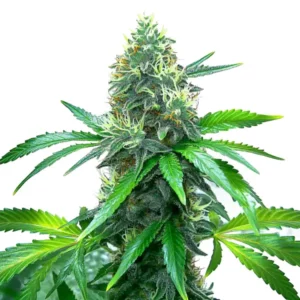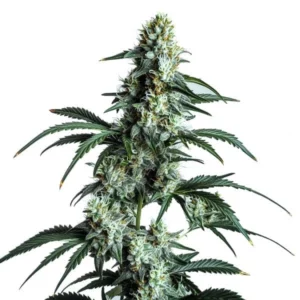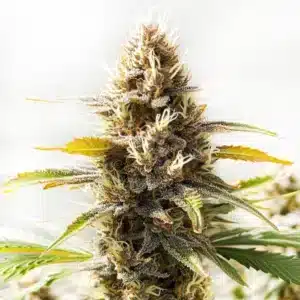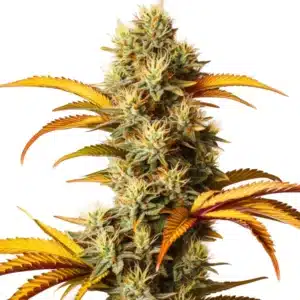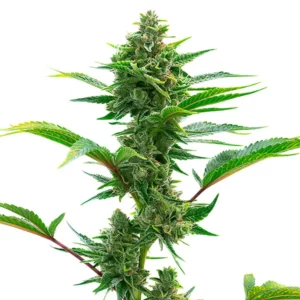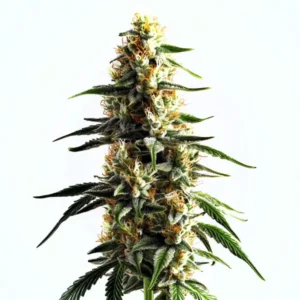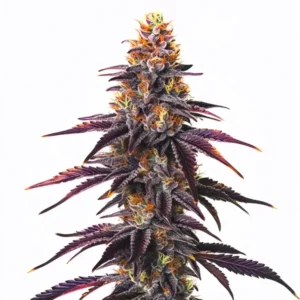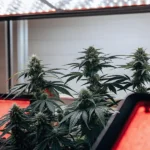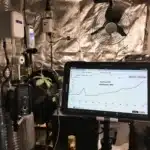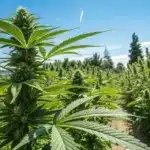
Boosting Yield with Better Transpiration Management
Boosting yield with better transpiration management is a game-changer for growers. Transpiration is how plants breathe and manage water. It’s the process where water is absorbed by the roots, travels through the plant, and evaporates from tiny pores on the leaves called stomata. Control this, and you improve your crop yield through transpiration control.
Effective techniques for managing plant transpiration can make a real difference. It’s about balancing water intake and loss. Too much or too little can stress plants, reducing growth and resulting in lower yields. By optimizing water use in agriculture for higher yield, you ensure your plants are thriving.
Recommended Strains
OG Kush
|
|
THC | 20% - 24% (Medium) |
|
|
Type | Feminized |
|
|
Yield | Medium |
|
|
Phenotype | 55% Indica / 45% Sativa |
Sour Diesel
|
|
THC | 22% - 25% (Medium) |
|
|
Type | Feminized |
|
|
Yield | High |
|
|
Phenotype | 30% Indica / 70% Sativa |
Consider strains like Blue Dream, which thrive under well-managed transpiration conditions. With Blue Dream, growers find that strategic water management helps achieve peak yields. It’s all about making the most of every drop of water your plants receive.
Strategies for Better Transpiration Management in Crops
Boosting yield with better transpiration management involves several effective strategies. First, monitor humidity levels carefully, as humidity directly affects how much water plants lose through transpiration. Keeping it in check promotes healthier growth and higher productivity. Use hygrometers to track these levels and adjust conditions as needed to optimize plant performance.
Next, understand the role of temperature. High temperatures increase transpiration rates. If your grow area gets too hot, your plants might lose more water than they can absorb. Cooling systems can help, especially during those hot summer months.
Implementing strategies for better transpiration management in crops can also involve selecting the right plant varieties. Certain plants are naturally more efficient at water use and can thrive even under less ideal conditions. Choosing drought-resistant varieties can be a proactive step in improving crop yield through transpiration control.
Additionally, consider integrating technology like automated climate control systems. These systems can adjust environmental conditions in real-time, ensuring that your plants are always in an optimal setting. This approach not only boosts yield but also enhances the overall sustainability of your agricultural practices.
Techniques for Managing Plant Transpiration Effectively
One technique is to use shade cloths. They reduce sunlight exposure and can help maintain a balanced temperature. This is particularly useful for strains like OG Kush, which can be sensitive to excessive sunlight.
Another method is mulching. Mulch helps retain soil moisture, reducing the need for frequent watering. It’s a simple way to optimize water use and boost your yield. Plus, it keeps weeds at bay, which compete for water.
Techniques for managing plant transpiration effectively also include using windbreaks to shield plants from harsh winds. Wind can increase transpiration rates by removing the humid air layer around leaves, leading to increased water loss. By creating barriers, you can protect your crops and maintain a stable environment, ultimately boosting yield with better transpiration management and helping plants retain optimal moisture for healthier growth.
Furthermore, applying anti-transpirants can be beneficial. These are chemicals sprayed on plants to reduce water loss without affecting their growth. While not a substitute for good environmental management, they can be an additional tool in your arsenal to ensure your plants remain healthy and productive.
Promos & Deals
Optimizing Water Use in Agriculture for Higher Yield
Drip irrigation is a popular method for optimizing water use. It delivers water directly to the plant roots, minimizing waste. This method is especially effective for strains like Sour Diesel, known for its high yield potential under precise conditions.
Another way to optimize water use is by using soil moisture sensors. These help you know exactly when your plants need water. Overwatering can be as damaging as underwatering, so getting it just right is key. A balance is what leads to robust growth and maximum yield.
Optimizing water use in agriculture for higher yield can also be achieved through rainwater harvesting systems. By collecting and storing rainwater, growers can reduce reliance on traditional water sources, ensuring a sustainable and cost-effective water supply.
Incorporating cover crops is another strategy. These plants help retain soil moisture and improve soil health, creating a more favorable growing environment. This practice not only conserves water but also enhances soil structure, contributing to improved plant growth and yield.
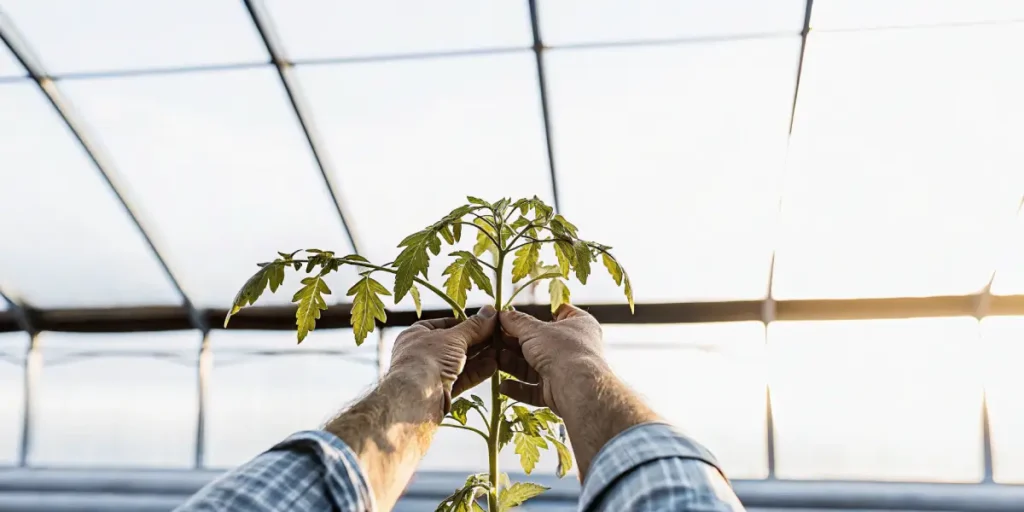
Enhancing Agricultural Productivity via Transpiration Management
Regularly check your soil. Healthy soil promotes better water retention and nutrient absorption. Amend your soil with organic matter to improve its structure. This small change can enhance your crop yield significantly.
Encourage deeper root growth. Deep roots access water from deeper soil layers, making plants more resilient to dry spells. This is crucial for maintaining a steady yield, especially in areas prone to drought.
Enhancing agricultural productivity via transpiration management also involves continual education and adaptation. Stay informed about the latest research and techniques, and be prepared to adjust your practices as new insights emerge in the field of agriculture.
Networking with other growers can provide valuable insights and shared experiences. Joining agricultural forums or attending workshops can help you learn from others’ successes and challenges, allowing you to refine your strategies for managing transpiration and boosting yield effectively.
FAQs
What is the importance of transpiration in plant growth?
Transpiration plays a crucial role in plant growth. It helps in the uptake of water and nutrients from the soil. As water evaporates from the leaves, it creates a vacuum that pulls more water and nutrients up from the roots. This continuous flow is vital for photosynthesis, the process by which plants make their food.
Moreover, transpiration helps cool the plant. On hot days, it acts like a natural air conditioner, reducing leaf temperature and preventing heat stress. By managing transpiration, you ensure your plants stay hydrated and healthy, leading to better growth and higher yields.
Knowing the importance of transpiration in plant growth also involves recognizing its role in nutrient distribution. As transpiration occurs, essential nutrients dissolved in water are transported throughout the plant, ensuring all parts receive what they need to function properly.
Additionally, transpiration contributes to maintaining plant turgor pressure, which is crucial for keeping plants upright and ensuring proper growth. Without adequate transpiration, plants may become flaccid, negatively affecting their overall health and yield potential.
How can I improve transpiration management in my grow setup?
Start by monitoring the environmental factors that affect transpiration, such as humidity and temperature. Use tools like hygrometers and thermometers to keep these factors within optimal ranges. This helps in managing water loss and maintaining plant health.
Implement effective watering techniques, such as drip irrigation, to deliver water directly to the roots. This minimizes evaporation and ensures your plants receive the right amount of water. Additionally, consider using shade cloths and mulch to further control the growing environment.
Improving transpiration management in your grow setup can also involve installing automated irrigation systems. These systems can be programmed to water plants at optimal times, ensuring consistent moisture levels and reducing water waste.
Experiment with plant spacing as well. Proper spacing can improve air circulation and light penetration, which are critical factors in effective transpiration management. By providing each plant with adequate space, you reduce competition and enhance overall growth.
Are there specific cannabis strains that benefit more from transpiration management?
Yes, certain strains like Blue Dream, OG Kush, and Sour Diesel thrive under well-managed transpiration conditions. These strains are known for their high yield potential when grown with optimal water and environmental management practices.
Each strain has unique needs, so it’s important to understand their specific requirements. By tailoring your transpiration management strategies to the strain you are growing, you can maximize their potential and achieve impressive yields.
Boosting yield with better transpiration management is particularly beneficial for cannabis strains that are sensitive to environmental changes. Understanding the specific water and nutrient needs of each strain can help you create a more controlled and productive growing environment.
Research and trials with different strains can provide insights into which varieties respond best to specific management practices. This information can be invaluable for growers looking to optimize their setup for particular strains and achieve the highest possible yield.
Can transpiration management help in reducing water usage?
Absolutely. By optimizing transpiration, you effectively manage how much water your plants lose and absorb. Techniques like using soil moisture sensors and drip irrigation systems ensure that water is used efficiently, reducing overall consumption.
This not only conserves water but also lowers costs associated with water usage. It’s a win-win situation for both the environment and your wallet, making your growing practices more sustainable and cost-effective.
Reducing water usage through effective transpiration management also contributes to environmental conservation. By using water more efficiently, growers can reduce their ecological footprint and contribute to the sustainability of natural resources.
Furthermore, reducing water usage can improve plant health by preventing issues related to overwatering, such as root rot. Maintaining the right balance of water improves plant resilience and can lead to healthier, more productive crops.
What are the signs of poor transpiration management in plants?
Plants with poor transpiration management often show signs of stress. You might notice wilting, yellowing leaves, or stunted growth. These symptoms indicate that the plant is either losing too much water or not absorbing enough.
Additionally, overwatering can lead to root rot, while underwatering can cause the plant to dry out. By regularly monitoring your plants and the growing environment, you can catch these signs early and adjust your care routine accordingly.
Other signs of poor transpiration management include leaf curling and browning edges, which often occur when plants are exposed to excessive heat without adequate hydration. Monitoring these symptoms can help you take corrective action in time.
Regular checks of soil moisture and plant health can prevent long-term damage. Using tools like soil moisture meters and conducting visual inspections can help you identify problems early and implement strategies to enhance your plants’ transpiration management.


